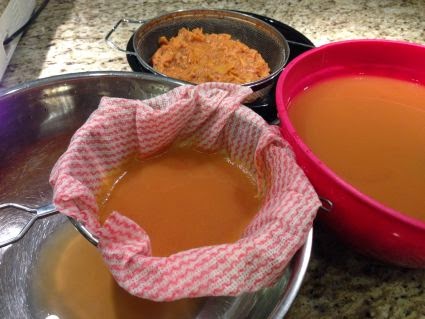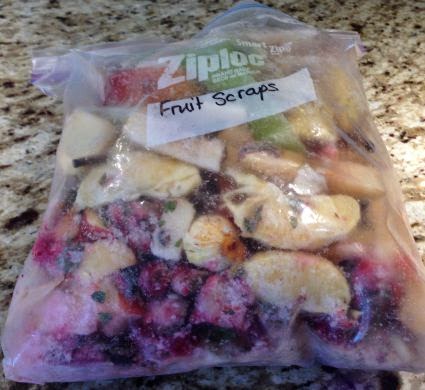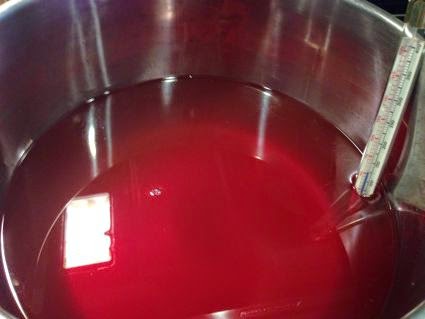My house smells like Thanksgiving right now.
Remember the carrot monster, Isabella? Well, I promised her I would make some Carrot Cake Jam. I found a recipe in one of my preserving books and I altered it slightly.
I took these items:
I put them all in a pot, except for the sugar and pectin.
Stirred it all up:
Boiled it gently for 20 minutes.
Added the pectin, and boiled it for 1 minute, then added the sugar. I brought it back up to a hard boil, and then boiled for 1 minute.
Once off the heat, I kept stirring for 5 minutes. This helps to prevent the fruit from floating to the top.
Into jars, and then into the canner.
I use my pressure canner as a boiling water canner, too, so that is why there are empty jars in the hot water. It just helps the filled jars from moving around in the canner as they process. Processing time for this jam is 10 minutes (I do 15 minutes as I am at elevation). Then they need to rest for 5 minutes in the canner with the heat turned off. I then transferred the filled jars to the counter to cool and seal.
Carrot Cake Jam
Makes six 250-ml jars
3 medium carrots, finely shredded
3 pears, peeled and finely chopped
1 can (14 oz./398 ml) crushed pineapple with juice
3 tbsp. lemon juice
1 tsp. cinnamon
1/2 tsp. nutmeg
1/2 tsp. ground cloves
1 box powdered pectin
6 1/2 cups sugar
Add all ingredients, except pectin and sugar to a pot. Stir and bring to boil. Reduce heat, boil gently, stirring occassionally, covered, for 20 minutes. Add pectin, return heat to high and boil 1 minute. Add sugar, return to boil, and boil hard, stirring, for 1 minute. Remove from heat and stir gently, continuously, for 5 minutes.
Fill hot, sterilized jars. Process in boiling water bath for 10 minutes. Turn off heat and let sit in canner a further 5 minutes. Remove jars from canner and let cool and seal.
Lupine & Laughter Mystery - Part Seven!
1 day ago
















































